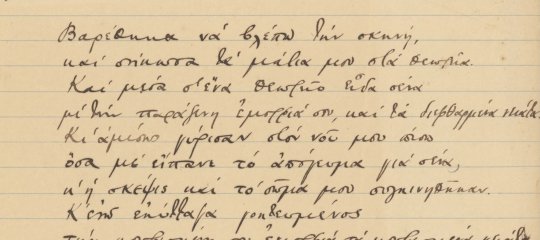Εκατονταετηρίδα της πρώτης μετάφρασης της Ιλιάδας στα αραβικά
kostasper writes, "Κώστας Περτσούνης
Συνέδριο για τα εκατό χρόνια από την πρώτη μετάφραση της Ιλιάδας στα αραβικά από τον Μπουστάνι και την έκδοση νέας από τον Dr Άχμεντ Ατμάν διεξάγεται στην Όπερα του Καΐρου (29 Μαΐου-1 Ιουνίου), υπό την αιγίδα του Ανώτατου Συμβουλίου Πολιτισμού της Αιγύπτου, με θέμα "Μετάφραση : πολιτισμική αλληλεπίδραση". Την έναρξη του Συνεδρίου κήρυξε ο Υπουργός Πολιτισμού κ.Φαρούκ Χόσνι."
29 Μαϊου 2004
Νέα μετάφραση της Ιλιάδας στα αραβικά εκδόθηκε από ομάδα καθηγητών του Κλασικού Τμήματος του Παν/μίου του Καΐρου με επικεφαλής τον Dr Άχμεντ Ατμάν, εκατό χρόνια μετά από την πρώτη έκδοσή της σ'αυτή τη γλώσσα από τον Σουλεϊμάν Αλ Μπουστάνι. Για το λόγο αυτό και υπό την αιγίδα του Ανώτατου Συμβουλίου Πολιτισμού της Αιγύπτου, οργανώθηκε Συνέδριο (29 Μαΐου-1 Ιουνίου) με θέμα το ρόλο της μετάφρασης στις διαπολιτισμικές σχέσεις. Την έναρξη του Συνεδρίου κήρυξε ο Υπουργός Πολιτισμού κ.Φαρούκ Χόσνι στην κατάμεστη από κόσμο αίθουσα της Όπερας του Καΐρου και με την παρουσία των ΜΜΕ της χώρας.
- Εισέλθετε στο σύστημα για να υποβάλετε σχόλια










